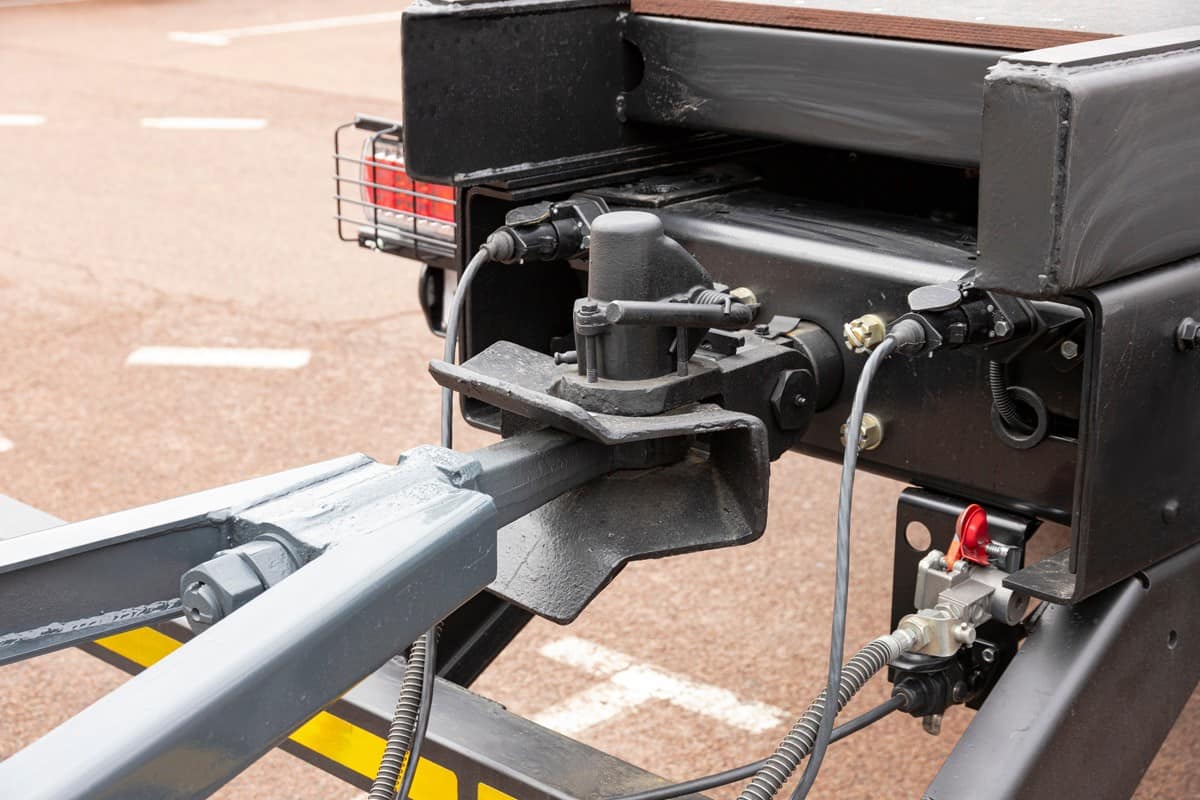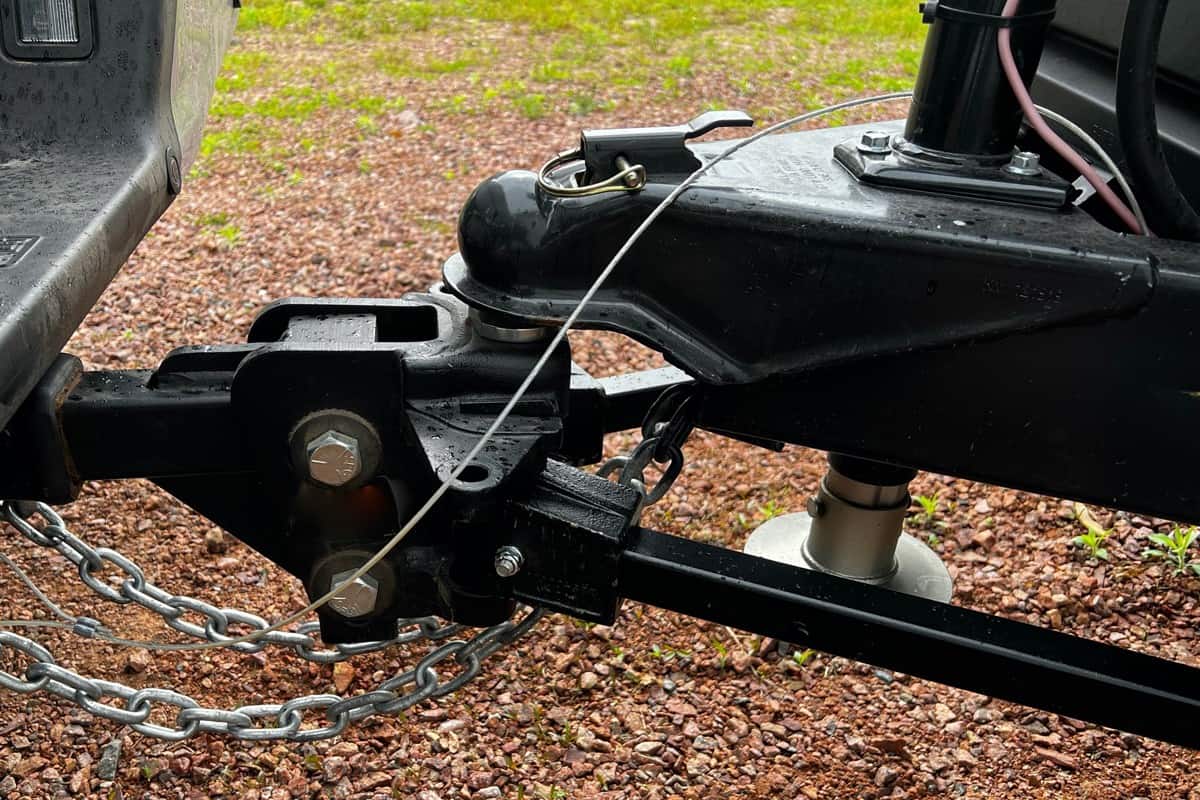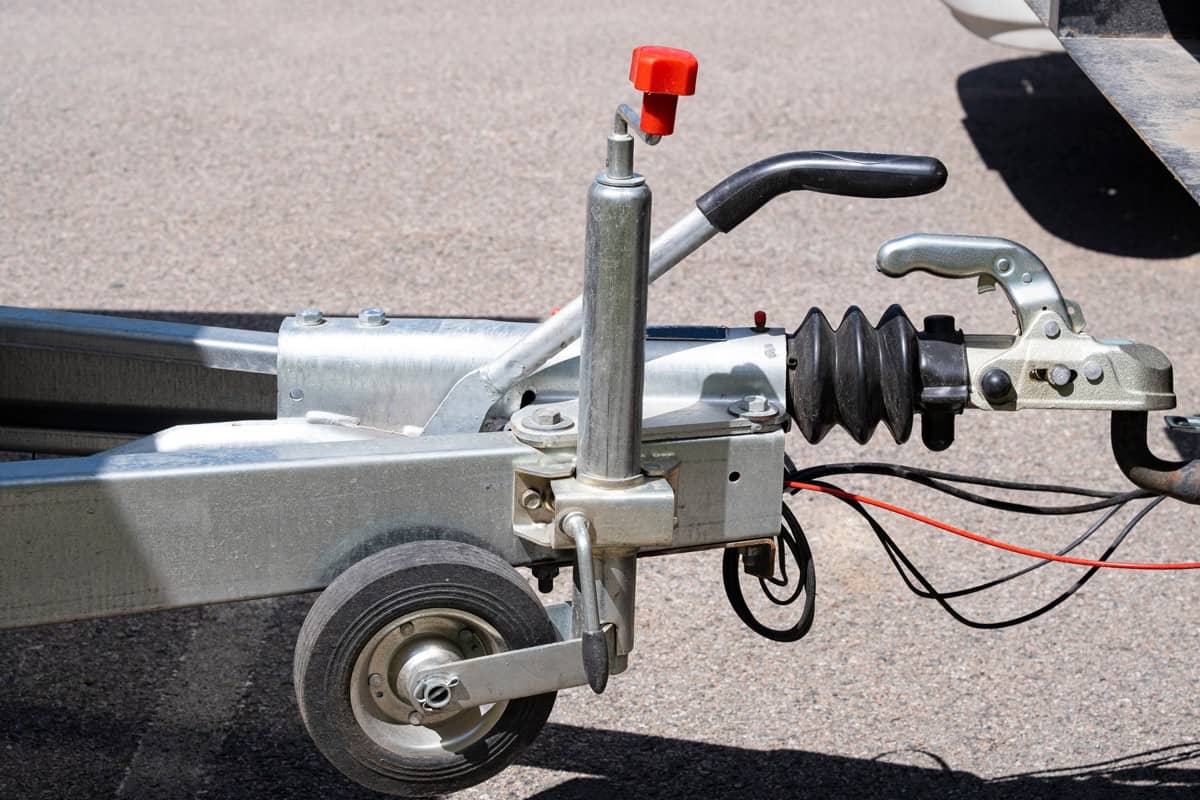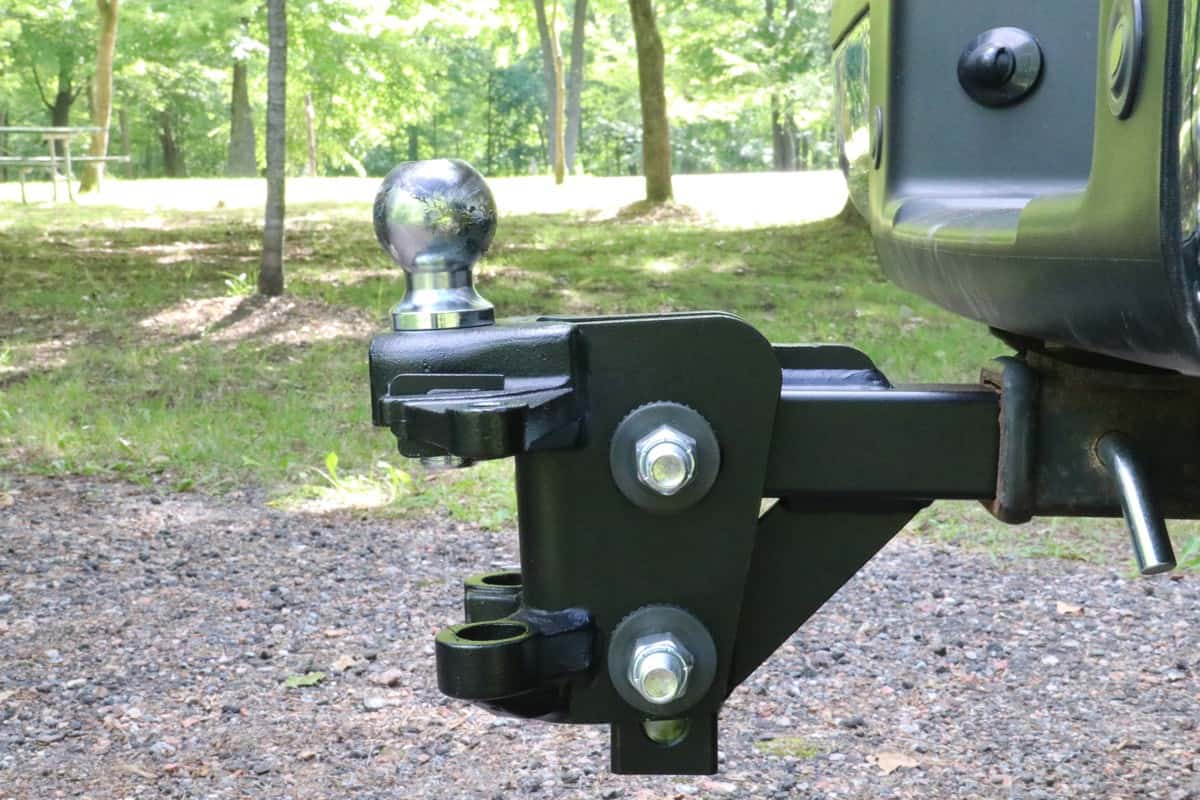Setting up your weight distribution hitch has only caused significant truck sag. Now, you’re wondering how much truck sag should exist with the weight distribution hitch. Also, what can you do to fix this problem? We researched these concerns for you, and here’s what we found.
The truck sag shouldn’t be less than 11 inches from the weight distribution hitch’s lowest point. Take note this issue often appears because of a misalignment in the towing setup.
So continue reading as we talk about how to readjust your weight distribution hitch setup based on specific scenarios. We’ll also tackle other relevant yet still important information that may help you prevent misaligning your hitch for future towing sessions.
How Do You Fix An Over- Or Under-Adjusted Weight Distribution Hitch Setup?

Your next step may depend if you over- or under-adjusted the weight distribution hitch. In this section, you’ll find the procedure to correct your towing setup based on your specific situation.
Adjusting An Over-Adjusted Weight Distribution Hitch Setup
What You’ll Need
![Hooking up the caravan ready for towing., How Much Should Truck Sag With Weight Distribution Hitch? [& What To Do If There Is Too Much Sag?]](https://vehq.com/wp-content/uploads/2023/01/8.-How-Much-Should-Truck-Sag-With-Weight-Distribution-Hitch.jpg)
- Wooden or concrete blocks
- Steel measuring tape
- Wheel chocks (optional)
- Floor jack (optional)
Step-By-Step Guide
Step #1: Secure The Towing Setup
Ensure that the truck and the hauled load are on flat and level ground. Engage the parking or emergency brakes to prevent the towing setup from rolling while you’re working on it. Chock every wheel if you want extra security.
Step #2: Raise The Hitch
Remove the weight distribution hitch’s swing bars. Then, place a support below the weight distribution hitch to raise the assembly. You can use different items for this step, including (but not limited to) wooden and concrete blocks. Doing so should remove the weight off of the hitch.
Step #3: Take The Initial Measurements
The first measurement you need to record is from the ground to the truck’s front axle. Lower the tongue weight of the weight distribution hitch, which should reduce the weight bearing down on the truck’s front axle. Then, measure the ground to the front axle of the truck again.
Tip: Document your readings so you won’t forget them. Don’t rely on memory alone, particularly since you’re going to remember multiple numbers for the procedure.
Step #4: Reassemble The Weight Distribution Hitch
Reattach the weight distribution hitch’s swing arms to the setup. Next, measure the ground to the front axle of the truck again.
This time, take a look at the weight distribution hitch’s owner’s manual for the ideal measurements for the setup. Remove some of the components from the setup, such as an L-bracket or washer.
Measure the ground to the front axle of the truck each time you take a part out of the setup. Stop taking out components as soon as you reach the ideal adjustment for your weight distribution hitch setup.
You can also watch this video if you need a visual guide for this procedure:
Adjusting An Under-Adjusted Weight Distribution Hitch Setup
What You’ll Need
- Steel measuring tape
Step-By-Step Guide
Step #1: Secure The Towing Setup
Park the towing setup in a site with flat and level ground. Engage the parking or emergency brakes afterward. Then, chock the wheels if necessary.
Step #2: Take Measurements
Measure the ground and the front axle of your truck and document the findings. Then, remove the weight distribution hitch from the truck but don’t disconnect the hauled load from the towing setup. Next, measure the same place again and take note of the readings.
Once you have the readings of the towing setup without the weight distribution hitch, this time you need to detach the hauled load from the assembly. Measure the ground to the truck’s front axle again and record the measurements.
Step #3: Adjust The Hitch Ball
Take note that your ideal sag should be a measurement that’s in between the unloaded height and coupled height with no weight distribution hitch. Then, adjust the hitch ball based on the ideal measurement.
Step #4: Reassemble The Towing Setup
Reattach the hauled load to the truck and reassemble the weight distribution hitch. Recheck the measurement of the ground and the truck’s front axle to ensure that the sag fits the hitch manufacturer’s recommendations.
Watch this video for a visual representation of this process:
Is It Better To Have A Hitch Higher Or Lower?

It’s important to note that each towing setup generally has specific hitch height requirements. But a good rule of thumb is to keep a 17-inch weight distribution hitch height. This measurement should be suitable for preventing a bottom-out in most towing setups.
What Happens If Weight Distribution Hitch Is Too High?
A weight distribution hitch placed at a higher location than recommended may cause brake and axle fatigue. Failure to address this issue may lead to these components failing, which might also put the towing setup at risk of decoupling.
Does Hitch Height Affect Tongue Weight?
The hitch height can affect the tongue’s weight. This trait is also a key factor for the sag or tilt experienced by the weight distribution hitch setup.
Take note that your hitch height shouldn’t make the towing vehicle or towed load sag significantly. You can use one of the methods mentioned in this post to adjust your weight distribution hitch if you encounter too much sag.
What Angle Should Weight Distribution Hitch Be?

Your weight distribution hitch’s head should be at 90 degrees. But be wary as the hitch setup often sags slightly upon attaching the hauled vehicle or load. Nonetheless, this tilt shouldn’t be significant, which might otherwise bring harm to the towing setup.
What Is The Best Weight Distribution Hitch?

Bear in mind that a single weight distribution hitch can’t provide all the benefits to all towing setups. However, some weight distribution hitches perform better than others, particularly in preventing significant truck sag.
Some options that may pique your interest are:
1. Andersen Hitches 3350 Weight Distribution Hitch
Unlike other weight distribution hitches that use spring bars, this particular model comes with chains. The setup also comes with a hitch head equipped with a damper. This design choice helps the towing setup maintain stability, especially by reducing bounces significantly.
Plus, this entire weight distribution hitch only weighs 60 pounds. The kit also comes with detailed instructions, making the setup process fairly beginner-friendly.
Interested buyers also have hitch ball options for this weight distribution hitch with the larger being able to handle a gross trailer weight of up to 14,000 pounds. It also has a maximum tongue weight of 1,400 pounds, making it sufficient for hauling loads like travel trailers and Class B RVs.
Check out this product on Amazon.
2. Equal-i-zer 90-00-1069 Sway Control Hitch
This particular weight distribution hitch is available in different size options. You can choose among selections like a model with a 400-pound maximum tongue weight rating and a 4,000-pound maximum gross trailer weight capacity. There’s also a version that can hold up to 1,600 pounds of tongue weight and 16,000 pounds of gross trailer weight.
Compatibility is also one of the main selling points of this hitch. It’s because it should be able to work with most trailers. In particular, this kit works with bumper pull trailers and with hydraulic surge brakes.
Like the previous weight distribution hitch mentioned, this product has an easy-to-install design. Plus, it should do a good job of reducing sways and other unwanted movements.
Check out this product on Amazon.
3. Husky 32218 Center Line TS Weight Distribution Hitch
If you’re looking for a weight distribution hitch that has sufficient strength in carrying the towing setup and doesn’t make a racket, this product might draw your attention. One of its highlight characteristics is its silent nature, allowing towing sessions to be almost devoid of rattling and/or squeaking from the hitch.
Also, this product comes at a reasonably inexpensive price point. In comparison, the other two weight distribution hitches already mentioned are quite costly. But its downside is that its installation is typically more laborious and time-consuming than other weight distribution hitches on the market.
Check out this product on Amazon.
Final Thoughts
It’s best to inspect your weight distribution hitch setup before moving forward with your towing session. Correct any truck sag produced by either an over- or under-adjustment with the hitch. Once you rectify the significant sag, you should be able to haul the load or vehicle with relative peace of mind.
If you’re looking for answers to other weight distribution hitch issues, you may want to look at these other posts:



